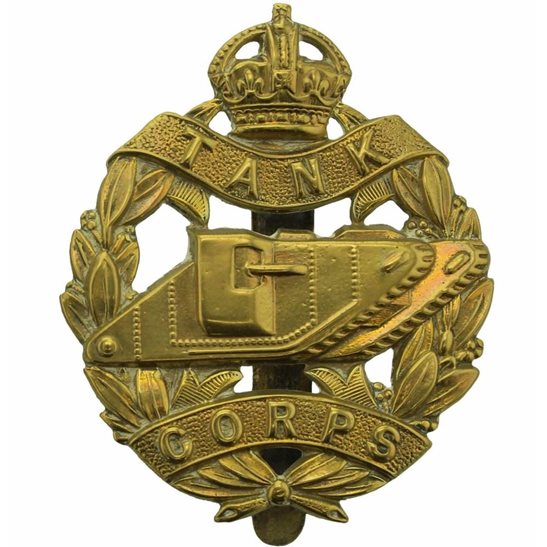Personal Details
Born: 1897
Family: The second son of George and Mary Anne Fisher of 4 Venables Yard, High Street, Whitchurch, Shropshire.
Civilian Occupation: George was employed as a labourer before enlisting in 1915.
Residence: For a while after the war he lived at 13 William Street, Prestwich, Manchester but returned to Baileys Yard, Whitchurch, Shropshire in 1922.
Military Details
Regiment: Tank Corps (previously King’s Shropshire Light Infantry)
Rank: Private
Service Number: 318281 (previously 4206)
Date of Enlistment: 10 October 1915
Date of Discharge: 13 March 1919
Reason for Discharge: Demobilisation
Other Information: He was posted to Hong Kong in April 1916 and to France from July 1917 to November 1917 when he was admitted to hospital, being discharged in April 1918.
George was awarded the Campaign Medals (British War Medal, and Victory Medal).

The British War Medal (also known as 'Squeak') was a silver or bronze medal awarded to officers and men of the British and Imperial Forces who either entered a theatre of war or entered service overseas between 5th August 1914 and 11th November 1918 inclusive. This was later extended to services in Russia, Siberia and some other areas in 1919 and 1920. Approximately 6.5 million British War Medals were issued. Approximately 6.4 million of these were the silver versions of this medal. Around 110,000 of a bronze version were issued mainly to Chinese, Maltese and Indian Labour Corps. The front (obv or obverse) of the medal depicts the head of George V. The recipient's service number, rank, name and unit was impressed on the rim.
The Allied Victory Medal (also known as 'Wilfred') was issued by each of the allies. It was decided that each of the allies should each issue their own bronze victory medal with a similar design, similar equivalent wording and identical ribbon. The British medal was designed by W. McMillan. The front depicts a winged classical figure representing victory. Approximately 5.7 million victory medals were issued. Interestingly, eligibility for this medal was more restrictive and not everyone who received the British War Medal ('Squeak') also received the Victory Medal ('Wilfred'). However, in general, all recipients of 'Wilfred' also received 'Squeak' and all recipients of The 1914 Star or The 1914/1915 Star (also known as 'Pip') also received both 'Squeak' and 'Wilfred'. The recipient's service number, rank, name and unit was impressed on the rim.


When I originally commented I clicked the “Notify me when new comments are added” checkbox and now each time a comment is added
I get three emails with the same comment. Is there any
way you can remove me from that service? Appreciate it!
Sorry about this. I’ll pass your request on to someone with more technical knowhow than me !!